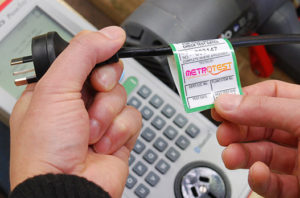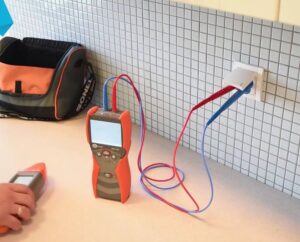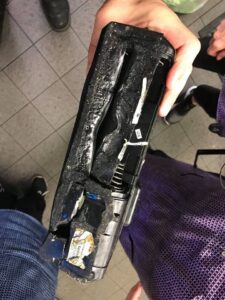
Testing and tagging is the process of checking the safety of portable appliances. Testing and tagging involves a visual inspection followed by electrical testing with a Portable Appliance Tester. The tagging refers to the labels attached to tested appliances to indicated their safety.

Although testing and tagging is somewhat straightforward, the implications of an improperly performed test could result in serious injury. So, hiring a quality testing and tagging specialist, with attention to detail is vital to reduce risk. To test and tag, one needs to be deemed competent under the current standards and does not necessarily need to be an electrician. Appliances need to be test regularly to reduce risk, and poor testers may miss or ignore the signs of danger.
Competency
A competent test and tag specialist ensures the standard and best practices are followed. The standards only outline how to safely and correctly test an appliance. Whereas, the best practice goes above and beyond these outlines to ensure a comprehensive service. A competent tester tests patiently and tags accurately. The tester will then keep a detailed record of every test with numerical data.
A less quality testing and tagging specialist may rush through their tests, and in the process follow the standards incorrectly, putting themselves and you at risk.
Quality Testing and Tagging Guarantee

As stated, a quality tester will keep detailed records of their tests. Under the standard record keeping is not required. However, even the most basic record keeping is strongly recommended. The ability to look at the exact results of a test gives you a guarantee that the test has been performed correctly, and its results are certain.
Simple pass/fail records can easily be made up, and if the tester was to be audited, little could be done to hold them accountable for dodgy testing and tagging.
Professionalism
We have heard many horror stories of testing and tagging specialists who rush through their tests and have little regard for the environments they are testing. At Metrotest we take pride in our brand image, and the quality service we provide.
Part of that means keeping a professional attitude and complying with the health and safety protocol of the workshops we frequently test. After all, testing and tagging is about preventing injury, not potentially causing one.

Here is what one of our recent clients had to say:
“I would like to express my thanks to you and your team for their professionalism, punctuality, attention to detail and the general way they conducted their work on site. The guys were always polite and worked around my office and workshop teams, to ensure they did not interrupt business, whilst adhering to our site health and safety rules.
A team to be proud of!” – Haydn Murray, ETEL South Island Business Manager
Hopefully, you learned what to look for in a quality testing and tagging specialist. If you need your appliances tested, give Metrotest a call at 0800 638 768 or contact us online for more information.








 Multimeters
Multimeters Portable appliance testers (PATs) are handheld or compact devices that test a range of electrical equipment and appliances for different values, i.e. earth continuity, current leakage, insulation, etc.
Portable appliance testers (PATs) are handheld or compact devices that test a range of electrical equipment and appliances for different values, i.e. earth continuity, current leakage, insulation, etc.
 Other standards and regulations that may be of interest when investigating test and tag include the
Other standards and regulations that may be of interest when investigating test and tag include the 




